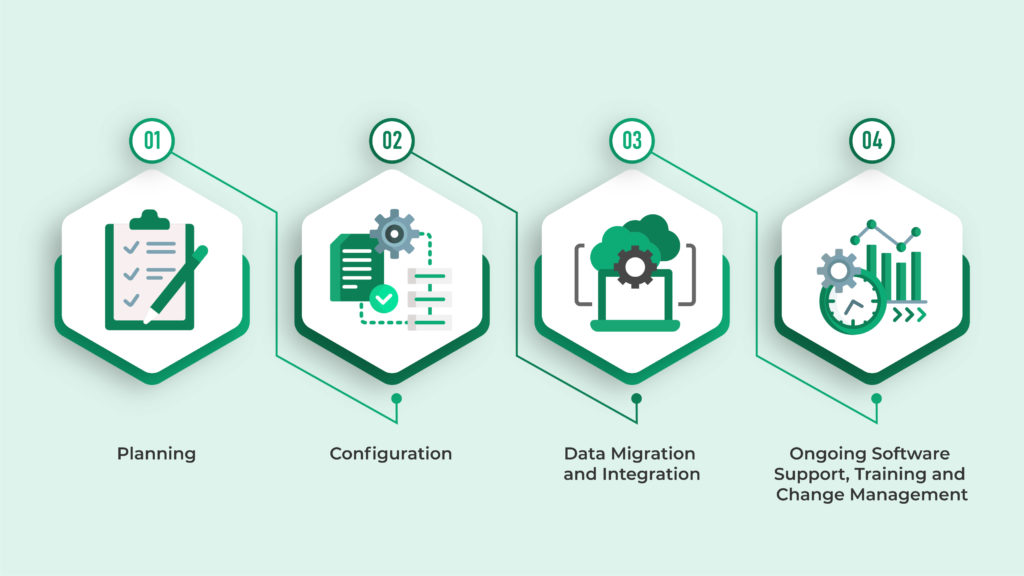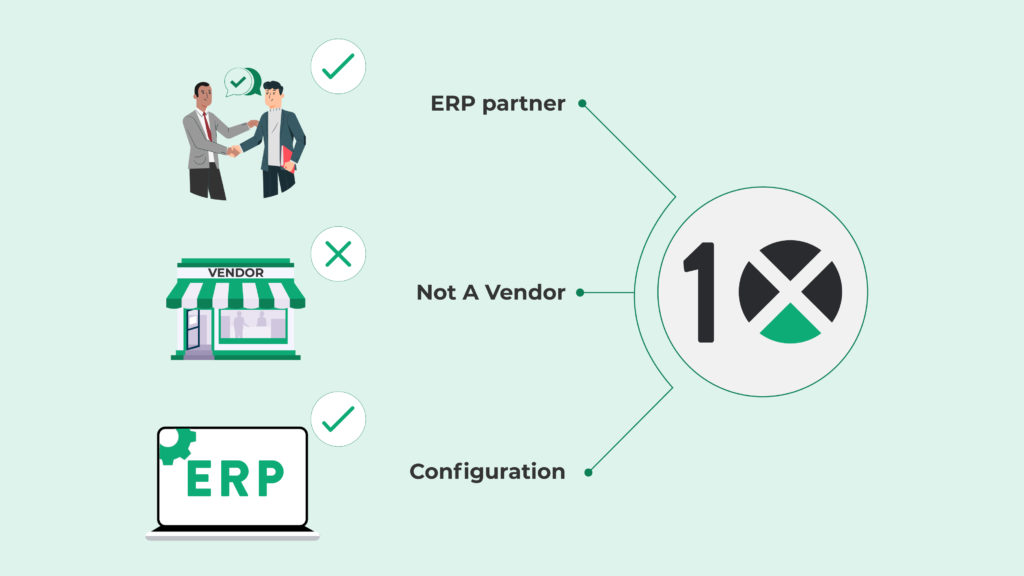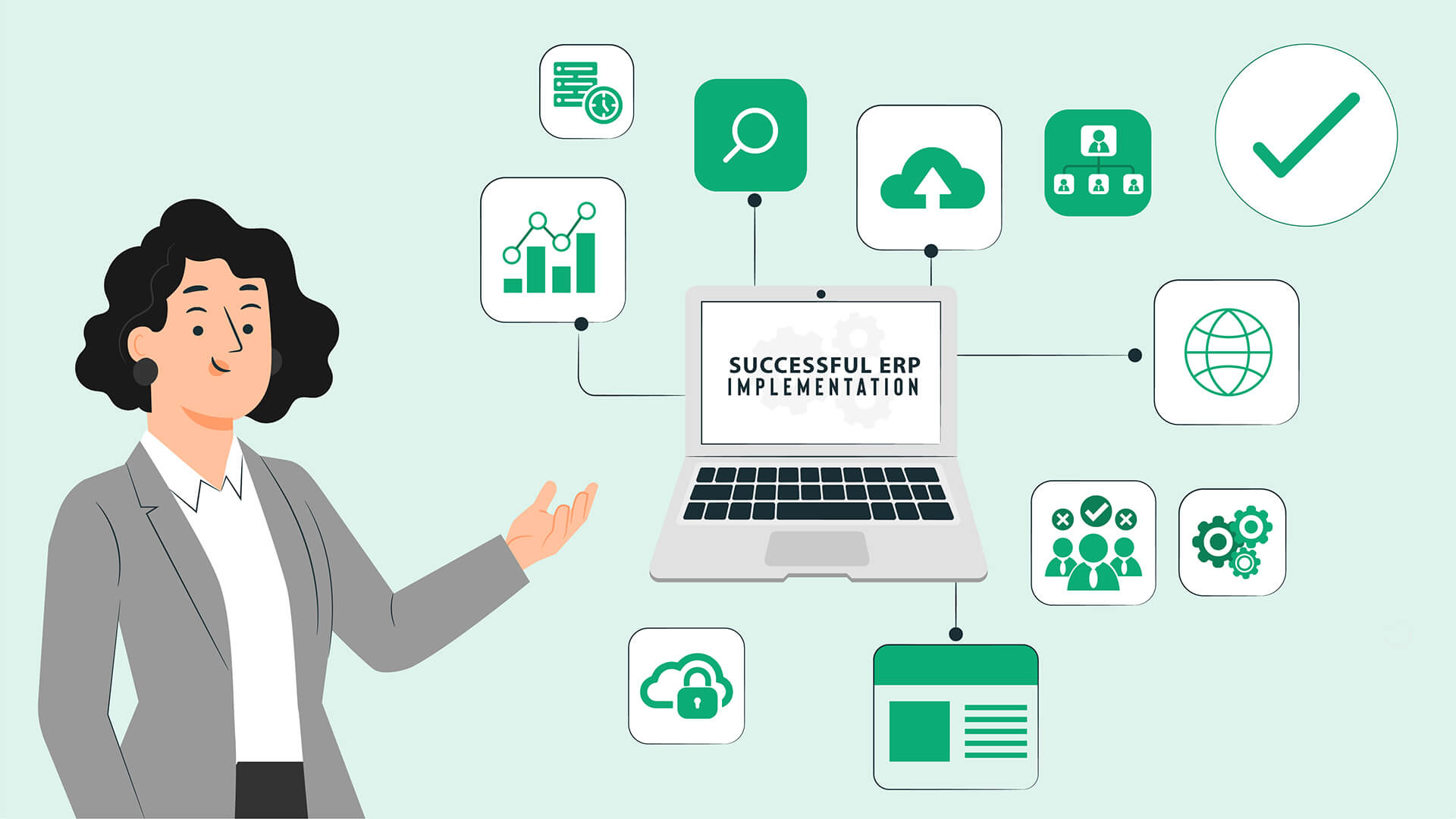Choosing the right enterprise resource planning (ERP) software solution from the plethora of ERP systems available on the market right now is daunting enough, but it seems that as soon as you narrow down your choices, your consultant, IT manager, and even the software providers themselves start driving home the point of an ERP implementation plan. Without the right ERP implementation process, your entire project is doomed to fail, or so it seems.
Of course, there’s a lot that can go wrong during any software implementation, and implementing a new ERP system is no different. You may assume that, after spending thousands of dollars and months of planning and hard work, you’ll receive a successful product and a smooth transition. That’s not always the case…and in fact, ERP implementation failures are far too common.
While we don’t believe in passing the ERP implementation buck to customers like so many other ERP software companies do, setting yourself up for success from the start will avoid disasters further down the road.
Steps to Implementing ERP Systems Successfully
Choosing the right ERP system or the right ERP implementation partner is the key to successful implementation, but that’s only half of the battle. Every business (and its needs) is different, which is why every ERP project requires its own approach. In general, there are a few steps every company, along with their internal or external project team members, key stakeholders, and ERP provider, should follow to guarantee a smooth and successful migration:

1. Planning
Like with most technology projects, choosing the right ERP solution for your business requirements takes the most time. Creating project cost projections and a realistic timeline are important, but you also have to consider how the software installation will impact the various business functions across the entire organization.
In a recent well-publicized case, a well-known cosmetics brand failed to figure a large acquisition into its operational ERP strategy. They focused on the technical aspects of the migration instead of considering the various process flows and operational impact of the acquisition. This not only impacted operations and led to a lawsuit but saw the company’s stock drop nearly 7% in 24 hours. It’s a cliche, but when you fail to plan, you are planning to fail.
During the early design phase, take the time to understand which software systems are currently being used, what the business processes are, and what issues you anticipate or currently experience. Make sure there’s a change management plan in place that takes all your needs into account, including user training, data migration, and calculating the ROI of moving away from your legacy systems.
Document your existing workflows across business units. In this way, your ERP software team and IT project team can start the development phase knowing exactly where the gaps lie in your system, what the current performance is like, and what they can expect during migration and integration.
Include as many stakeholders as possible, including departmental managers, your internal software development teams, and project management leads, across all ERP implementation phases. Make sure you have a thorough understanding of business objectives, goals, budgets, and timelines in order to mitigate the risk of an ERP implementation failure.
2. Configuration
Once you and your ERP platform provider have a better grip on the various intricacies unique to your business, how to configure your system can begin. Together with your internal project manager and business process owners, the ERP provider should recommend streamlining and improving processes in line with the ERP software system’s functionality. Process maps will give the ERP project team a better indication of which features are most critical and which can be moved to Phase Two of the implementation process.
If the software requires customizations, the process for implementing those customizations must be discussed and decided early on. End-user training and involvement are a good idea in the early days of your ERP implementation project. Not only will this assist with achieving buy-in, but end users are more capable than anyone of identifying whether or not your new ERP software will be an improvement over your old system or not.
3. Data migration and integration
Data migration and/or data integration are where ERP projects tend to go wrong. It’s probably the most critical part of the implementation process and demands a lot from your internal team. Maintaining data integrity when you are moving legacy data to a new ERP system is challenging and requires a lot of preparation. Cleanse your databases and ensure you are only migrating strictly necessary information. Redundant or duplicated data shouldn’t be moved. Your team can decide whether they want to use manual processes or automate the migration, but it’s important to validate your migrated data and test every element thoroughly.
Bear in mind that 40% of companies experience disruption after their ERP software implementation go-live day. Testing during every stage of the ERP implementation process will verify that the system is functional and functioning according to your requirements. There will be bugs that indicate the need for additional configuration, but that is part and parcel of all ERP implementations. In fact, at 10X ERP, we prefer the term Launch instead of Go-live – Go-Live implies that the ERP implementation process has been completed, while it’s truly the start of a relationship between your company and ERP provider. System testing should be ongoing to ensure that your project objectives are consistently met.
4. Ongoing Software Support, Training, and Change Management
A typical ERP implementation plan ends with the Go-Live date, but helping teams adjust to the new ERP system is essential. Setting up support and training for end-users that will use the new system daily should be part of every ERP implementation checklist. Make sure that you communicate exactly what the enterprise resource planning software will do for each team and build excitement around the new ERP system.

An ERP provider worth their salt will stay in touch and assist your business long after the Go-Live date has passed. After all, modern systems need to evolve alongside your company. The ERP team should be there to guide you through updates and solutions for new business requirements as they crop up. It’s important to evaluate your ERP system regularly to ensure it’s still delivering value. If all goes according to plan, you’ll be using it for years.
Conclusion
The key to a successful ERP implementation is finding an ERP partner, not a vendor. You need to find an ERP software provider that is willing to work with you to ensure your ongoing success through guidance, technical know-how, and support. At 10X ERP, we not only build our own software but oversee the entire ERP implementation from start to finish…and beyond. We don’t want to sell you an ERP software package – we want you to benefit from the ERP system from the start. If you are interested in working in partnership with an ERP provider that is dedicated to your success, let’s get in touch.
